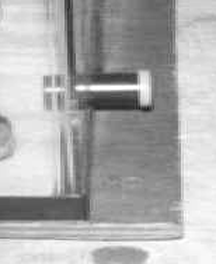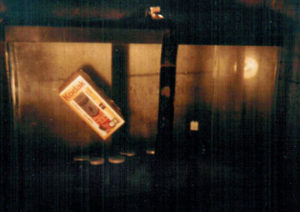First published in the Summer 2011 ATransC NewsJournal

Picture from Real Communication? Report on a SORRAT letter-writing Experiment, Figure 3, Page 21, (taken by I. Grattan-Guinness)
Other SORRAT Articles
SORRAT History and Background
The Fishharp
Full I. Grattan-Guinness Article
SORRAT Examples
Its All About Intentionality
FEG Blog: SORRAT – A Long Term PK Study
The days of large-scale physical phenomena, which so enthralled our Victorian and Edwardian predecessors, seem now a long way away, to the extent that reported cases are treated with suspicion even by those who are generally sympathetic to psychical research. An interesting and long-term case is the group called Society for Research in Rapport and Telekinesis SORRAT, which was founded by John G. Neihardt (1882–1973, who made his career as a poet and literary critic after initial training in physics (Richards, 1973). Aware of such phenomena from his own youth, he worked quietly throughout his life until he felt ready to form this group in 1961 at his home at Skyrim Farm near Columbia, Missouri. “SORRAT” is his acronym for “Society for Research in Rapport and Telekinesis,” in that order; for central to his philosophy was that rapport is the key to telekinetic processes, an essential cause for the effects that take place. This has remained a key feature for the group.

When sittings were held, very large-scale phenomena soon occurred: apparently heavy furniture rose and fell, entire rooms shook, and tables went walkabout into the farmyard. In his career, Neihardt had taught at the University of Missouri at Columbia; so the news spread there soon, and derision and persecution came back rapidly. From an early date, therefore, SORRAT has kept much to itself, while welcoming serious newcomers. The most substantial account to date is the book on the group by John Thomas Richards (born 1937), a teacher of English with an engineering background (Richards, 1982); since Neihardt’s death he has coordinated much of the work of the group, maintaining the (informal) membership list and corresponding with members and others, and holding sittings in his own home in Rolla, about 100 miles from Columbia. These usually take place in the “Isolation Room,” about 5 feet by 10 feet, located in the basement.
External appraisal has been rare. Hansen and Broughton (1991) found evidence of tampering with a pack of playing cards, while Wiseman and others (1992) decided, on statistical grounds, against a test involving the reading of a sealed pack. In a book on religious belief, the American sociologist James cClenon included SORRAT in a chapter on small sitter groups, but was rather agnostic about the probity of the events experienced, mainly because of his principal concern with belief structures rather than the events (McClenon 1994, Ch. 14). Berthold E. Schwarz (1994) drew more positive conclusions from his experiments on linking rings.
Schwarz’s experiments were carried out in collaboration with Edward Cox, an associate of J. B. Rhine. Neihardt launched SORRAT experiments about 1966, in part with the encouragement of Rhine, who also suggested a new means of staging experiments: a glass container set on a wooden or metal base with a securely lockable lid, in which artifacts were placed and any phenomena observed without interference. Cox built the first such frame, which was known as a “Cox box”; since then the more informative name “Minilab” has been attached to it, and it has been used elsewhere in psychical research.
After moving to Rolla in 1978, Cox carried out over many years a wide range of experiments, such as rings linking and unlinking, balloons inflating, metal bending, and methods of alerting a film camera to the start of a phenomenon. Many of these experiments were carried out in the Isolation Room, using a lab built with another SORRAT member and local resident, Steve Calvin…
From: “Real Communication? Report on a SORRAT Letter-Writing Experiment,” Journal of Scientific Exploration, Vol. 13, No. 2, citeseerx.ist.psu.edu/viewdoc/download?doi=10.1.1.518.5976&rep=rep1&type=pdf
See: Sorrat: A History of the Neihardt Psychokinesis Experiments, 1961-1981 by John Thomas Richards, available on Amazon.
References
Hansen, G. P. & Broughton, R. S. (1991). Card-sorting with SORRAT. Artifex, 9, 19.
McClenon, J. (1994). Wondrous Events: Foundations of Religious Belief. Philadelphia: University of Pennsylvania Press.
Richards, J. T. (1973). Luminous Sanity: Literary Criticism written by John G. Neihardt. Cape Girardeau (MO): Concord.
Richards, J. T. (1982). SORRAT. A History of the Neihardt Psychokenesis Experiments. Metuchen (NJ) and London: The Scarecrow Press.
Schwarz, B. E. (1994). Presumed paranormal linkage of rings. International Journal of Psychosomatics, 42, 95
Wiseman, R., Beloff, J. and Morris, R. L. (1992). Testing the ESP claims of SORRAT. Journal of the Society for Psychical Research, 58, 363.
![]()
